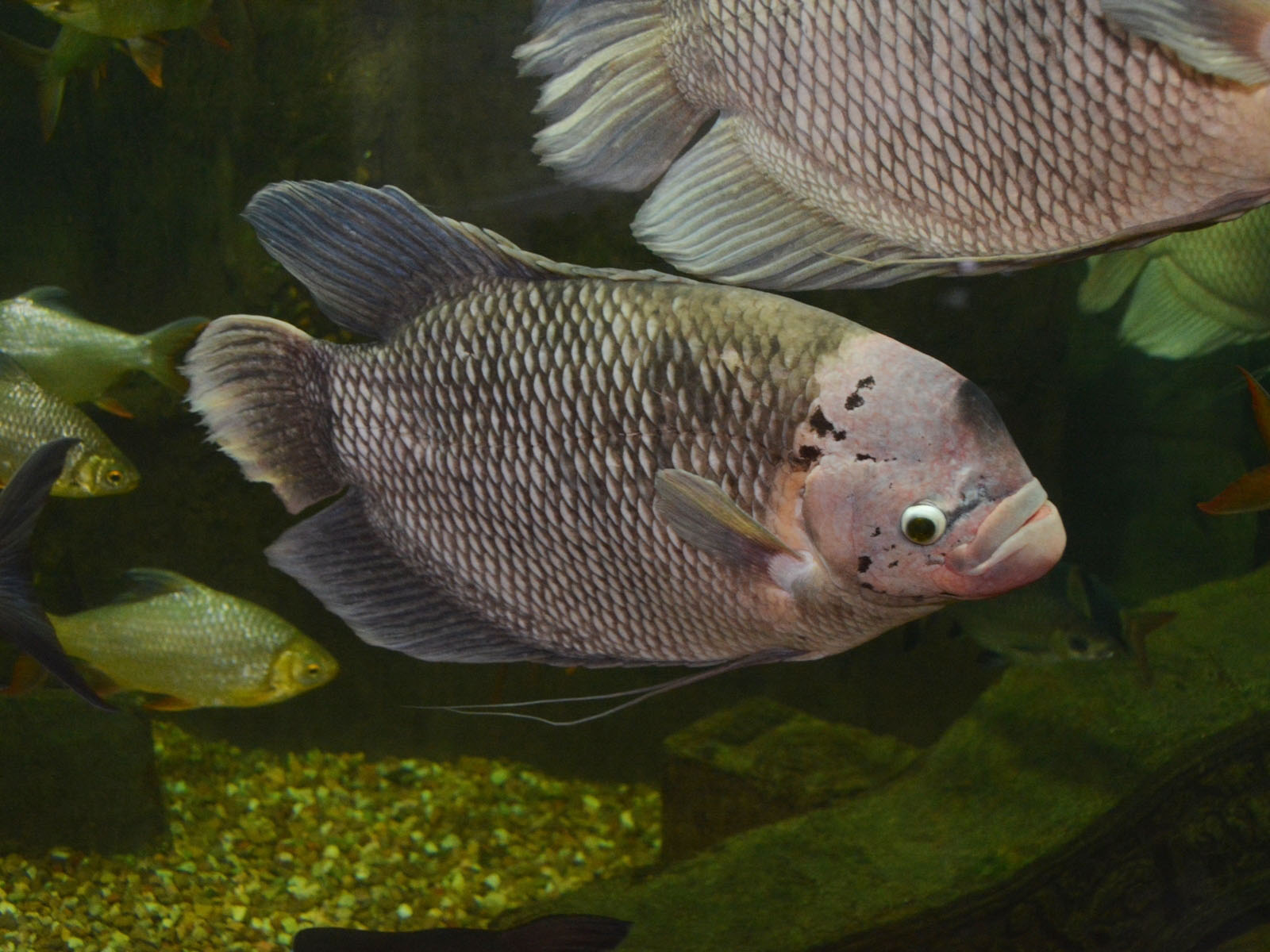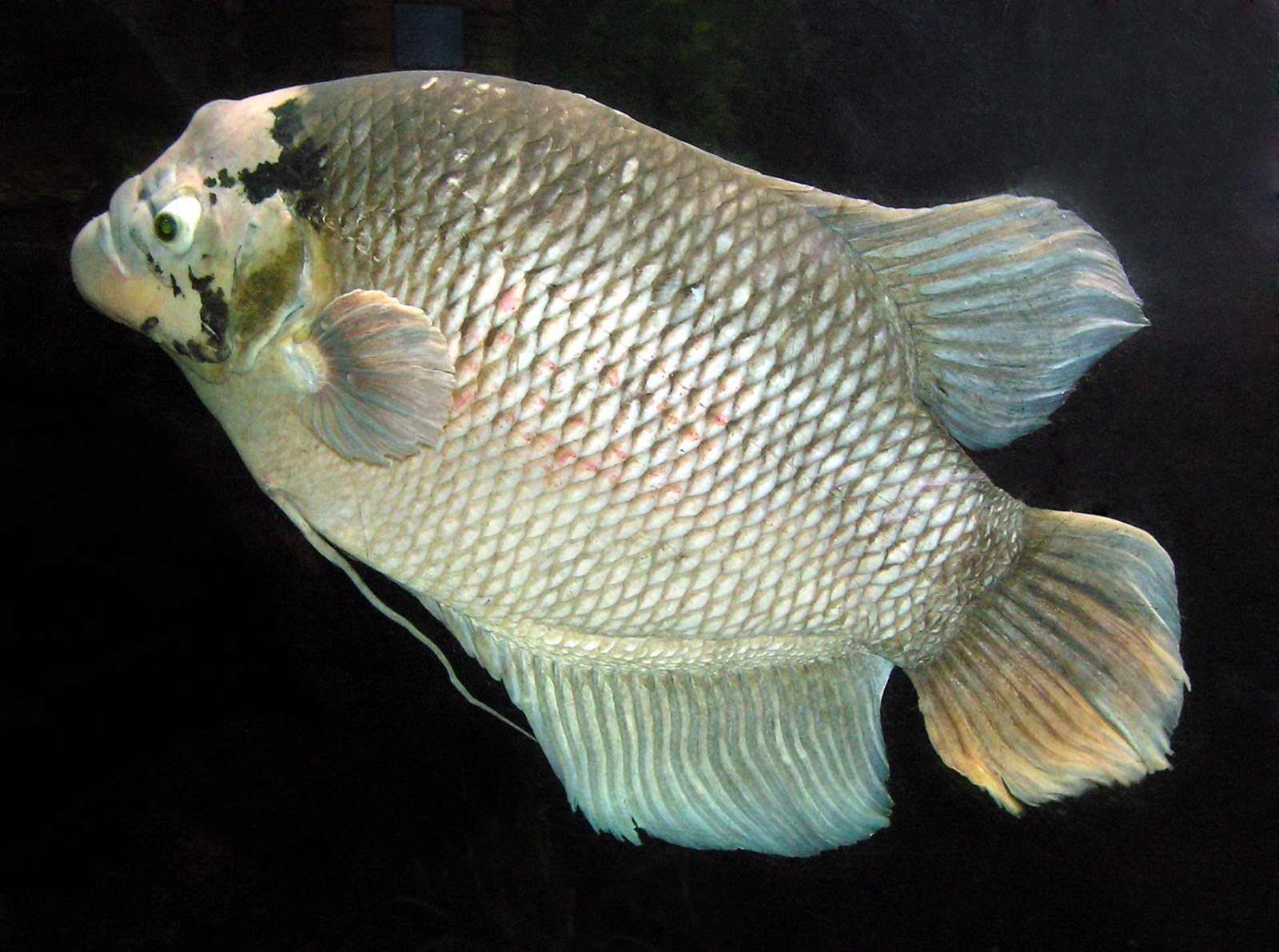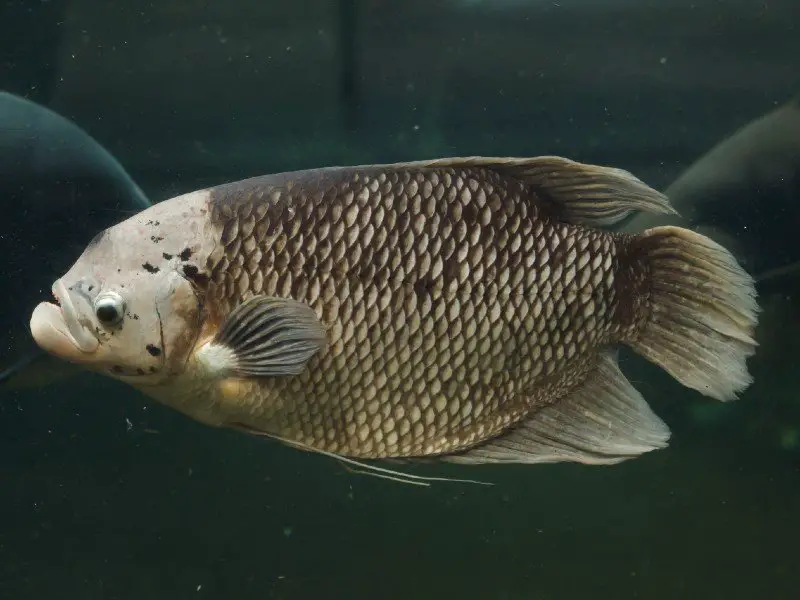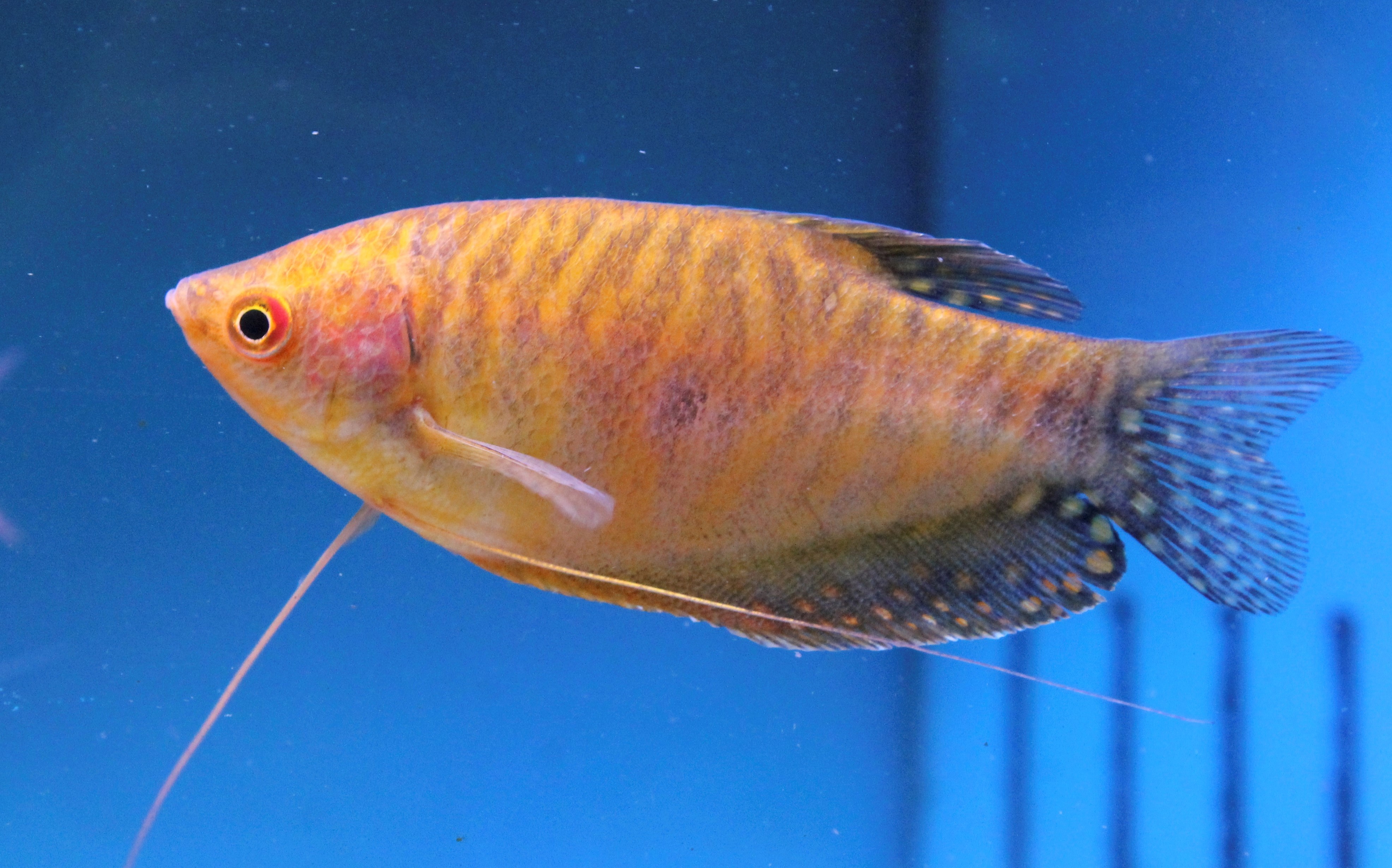
Giant Gourami Care Guide Size, Behavior, Diet, And More Aquariadise
About the Giant gourami. Giant gouramis are also known as the Common or True gourami and the Osphronemus goramy, being members of the Osphronemidae family of tropical freshwater fish. Like all gouramis, these are labyrinth fishes that have the ability to breathe air at the water surface, which they do from time-to-time in the aquarium.

Giant Gourami Care Guide Size, Behavior, Diet, And More Aquariadise
Gouramis are bubblenest builders, like Siamese fighting fish, or Bettas. The male builds a dense nest of bubbles and lures the female over to it for mating. He then guards the eggs until they hatch a few days later. Partly in consequence of its size, the Giant Gourami is a significant food fish. Fresh or brackish water, particularly slow-moving.

Giant Red Tail Gourami Aquarium Fish India
The giant gourami (Osphronemus goramy) is a species of large gourami native to freshwater habitats in Southeast Asia. It has also been introduced elsewhere. The species is commercially important as a food fish and is also farmed. It can be found in the aquarium trade, as well. The species has been used for weed control on highly invasive aquatic plants like Salvinia molesta, as the giant.

Giant gourami in zoo photo and wallpaper. Cute Giant gourami in zoo
The giant red tail gourami is omnivores. Within the wild, they'll eat aquatic algae in addition to fish, crustaceans, frogs, worms, and even lifeless meat. In captivity, it'll typically eat all types of meals. To maintain stability provide top-quality flake or pelleted meals on a regular basis.

Giant Gourami Fishes
The Giant Gourami (Osphronemus goramy) is a robust fish species that can thrive in various water conditions. These fish are relatively easy to maintain, and their dynamic nature, coupled with their insatiable appetite, make them a joy to keep. However, their large size means they require an ample-sized aquarium, making them an excellent option.

Big Fishes of the World GIANT GOURAMI (Osphronemus goramy)
Everything About Giant GouramiQuick StatusScientific Name: Osphronemus goramyCommon Name : Giant Gourami, common gourami, true gouramiTank size : 176 gallons.
Big Fishes of the World GIANT GOURAMI (Osphronemus goramy)
Giant Gourami Profile. The Giant Gourami, scientifically known as Osphronemus goramy, is a large species of gourami native to Southeast Asia. It's renowned for its impressive size, often reaching up to 70 cm in length in the wild.These gentle giants are known for their peaceful temperament, making them a favorite among fish enthusiasts.

Giant Gourami Care Size, Diet, Lifespan & Tank Conditions
The general size guide for a giant gourami tank is one that is 2 meters long, 27.5 inches wide, and something nice and high. If you decide to own a giant gourami from a juvenile age, you can keep around four juvenile 4" long fish in a 90-gallon tank. However, you need to be prepared to replace this tank once the fish begin to outgrow it.

Gold GouramiTrichopodus trichopterus
When breeding Giant Gourami, the first step is acquiring a tank large enough to house them. A 250-gallon tank is where you should start. Male Giant Gouramis will begin to build a nest before the female lays her eggs. The nest is usually made from bubbles and plants. The female will lay between 3,000 to 10000 eggs.

Giant Gourami (Osphronemus goramy)1 Tropical Fish Keeping
The giant gourami's culinary prowess extends beyond immediate consumption; in certain regions, it undergoes salting processes, serving as a means of preservation to extend its shelf life. 23. The Stature of the Giant Gourami. In the aquatic realm, the giant gourami asserts its dominance not only in culinary realms but also in sheer size.

Giant Gourami Breeding Understanding The Process FishyFacts
Gouramis, or gouramies / ɡ ʊ ˈ r ɑː m i /, are a group of freshwater anabantiform fish that comprise the family Osphronemidae.The fish are native to Asia—from the Indian Subcontinent to Southeast Asia and northeasterly towards Korea.The name "gourami", of Indonesian origin, is also used for fish of the families Helostomatidae and Anabantidae.. Many gouramis have an elongated, feeler.

Gourami Types, Characteristics, & Facts Britannica
Means of Introduction: According to Brock (1960), the giant gourami introduced to Hawaii came from the Philippines. The reason for the introduction was not given, although it was presumably stocked as a food fish. The other introductions were possible aquarium releases as this species soon outgrows containers.

Gold Giant Gourami (Osphronemus goramy 'gold') Aqua Imports
Decorations: Scattering bits of driftwood and logs in the tank is enough decoration in a giant gourami tank. Giant gouramis need plenty of room to swim, and artificial decorations and plastic props take up a lot of tank space. Water pH Level: The water pH level in a giant gourami tank should be between 6.8 and 7.8.
Big Fishes of the World GIANT GOURAMI (Osphronemus goramy)
The giant gourami (Osphronemus goramy) is a food fish in Southeast Asia. Other gourami, several of them popular in home aquariums, are Asian members of different genera. They are generally rather deep-bodied and small-mouthed. With the exception of the kissing gourami, sole member of the family Helostomatidae, they are of the family Belontiidae.

Giant Gourami at my LFS. He's 16 years old and about 2 feet long. And
For a group of fish up to 10 cm (4 in) long, a 400 liter (90 gals) tank will do. There, a group of 5-6 youngsters may live up to reaching the size of about 20 cm (8 in). For a single adult giant gourami, a minimum tank size of around 150 gallons (568 liters) is typically recommended. This provides enough swimming space and accommodates their.

Giant Gourami (Osphronemus goramy) Care & Tank Mates Fish Laboratory
The Giant Gourami is the largest of all labyrinth fishes…big, powerful, and an overall awesome fish! The Giant Gourami Osphronemus goramy is a stunning fish when it gets large. In their natural environment natives have reported lengths of almost 2 feet (60 cm). It has even been suggested by Vierke (1978) that it can get as large as 2 1/3 feet.